Maggie Groat DOUBLE PENDULUM
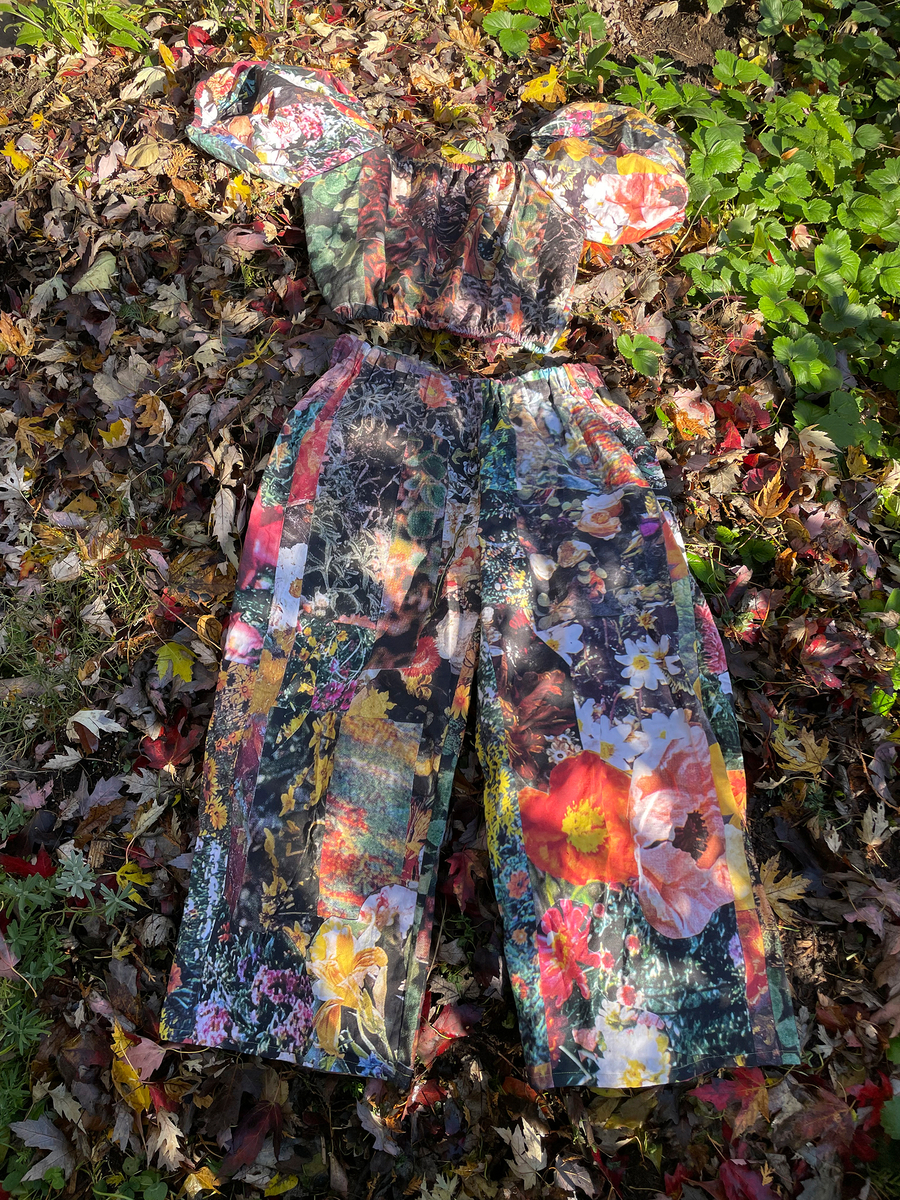
Presented across three sites in Toronto—at CONTACT Gallery, on billboards, and in an outdoor installation at Harbourfront Centre—the newly commissioned work of artist Maggie Groat implements a collage-based approach in installation, sculpture, and image. Groat’s work weaves together found and salvaged materials, layering, fragmenting, obscuring, and recombining, to hold up a distorted mirror to lived and speculative encounters with the natural world. Her practice investigates decolonial ways of being, alternative archiving, sustainable exhibition making, and the transformative potential of salvaged materials during times of living through climate emergencies.
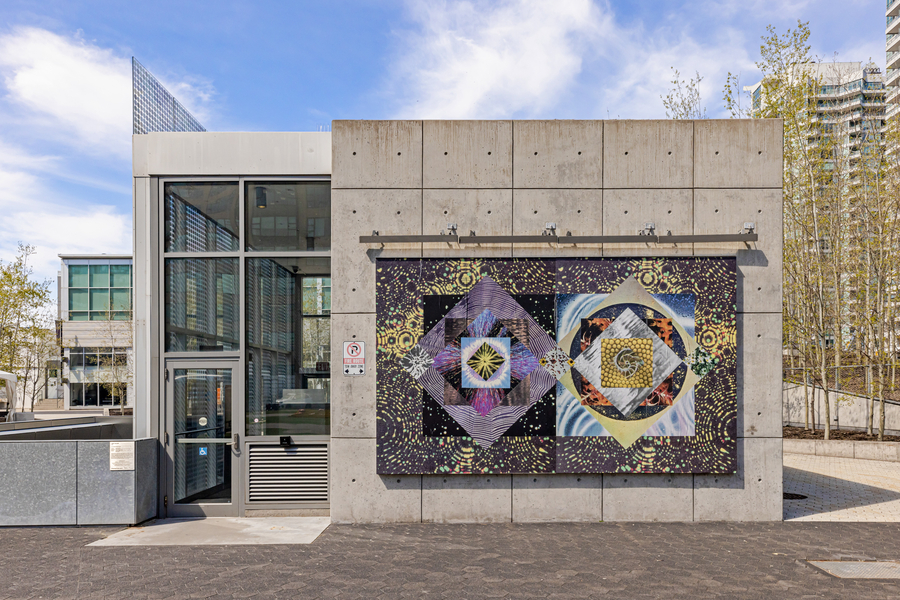
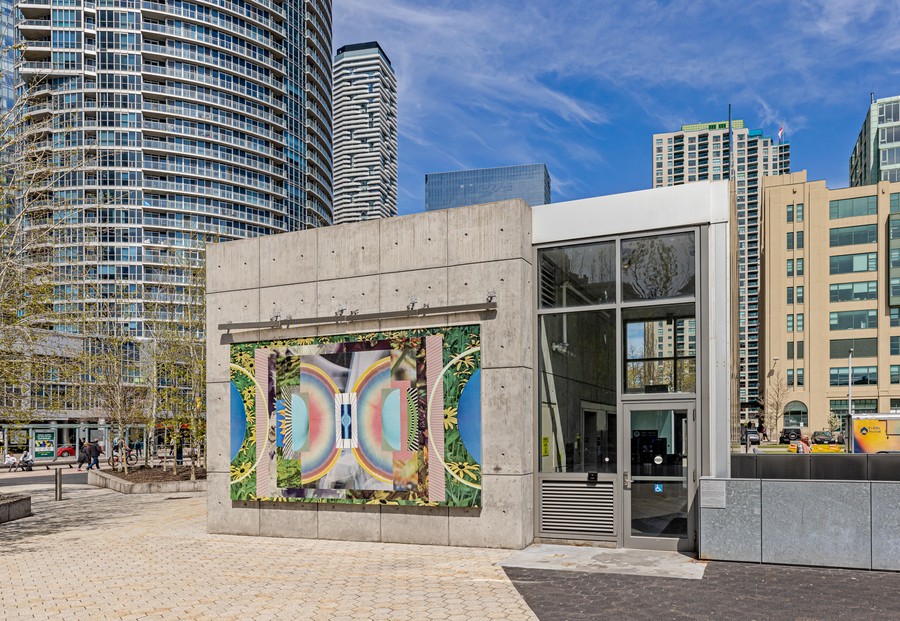
Situated at Harbourfront Centre’s parking pavilion are three scanned, enlarged, and wheat-pasted handmade collages made from found images. The images’ layered associations offer imperfect symmetries and imagined interconnectivities, while the materiality of their installation offers a sustainable approach to large-scale public display. The hypnotic work strange attractors, fluid flows, butterfly effects (2023), with its evocative, rippling, fluid patterns brings to mind the ever-moving waters along the shoreline of Lake Ontario, only steps away from the installation, and its connection to collective stewardship and deep time. These works are influenced in part by theorist Edward Lorenz’s concept of “the butterfly effect,” which considers how one small occurrence can create unintended or unimaginable consequences—the eponymous example being the theoretical butterfly flapping its wings and causing a typhoon. Groat’s associative collages evoke the many scales of life, their critical interdependence, and the underlying patterns and connections that exist within complex systems.
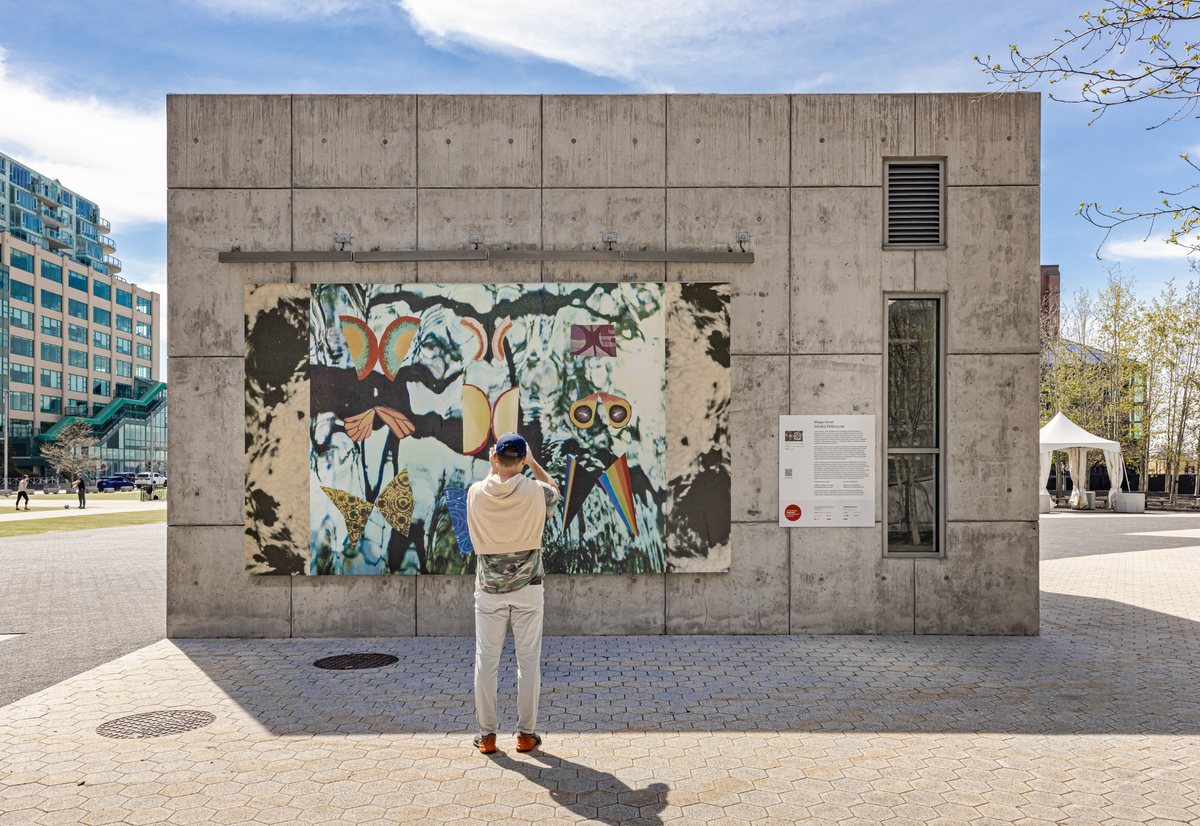
In dialogue with the waterfront installation, the images presented on two vertical billboards at Dovercourt Road and Dupont Street form patterns that seemingly sway and shift, invoking the complexity of time and space, and, perhaps, the simultaneous oscillations of parallel dimensions. The work facing south, titled double pendulum (2023), shares a collection of found images that unfold from an unsteady centreline where subtle differences emerge from side to side. The work to the north, sensitive dependance > initial conditions (2023), seemingly oscillates in and out of focus, suggesting correlations between the macro and micro, between clarity and confusion. Together, these two large-scale, site-specific installations create an unseen line connecting the human-made contours of the city’s harbour to the ancient shoreline of a glacial lake, just north of Dupont Street. These works conjure the futuristic and otherworldly while simultaneously looking back to past geologic eras.
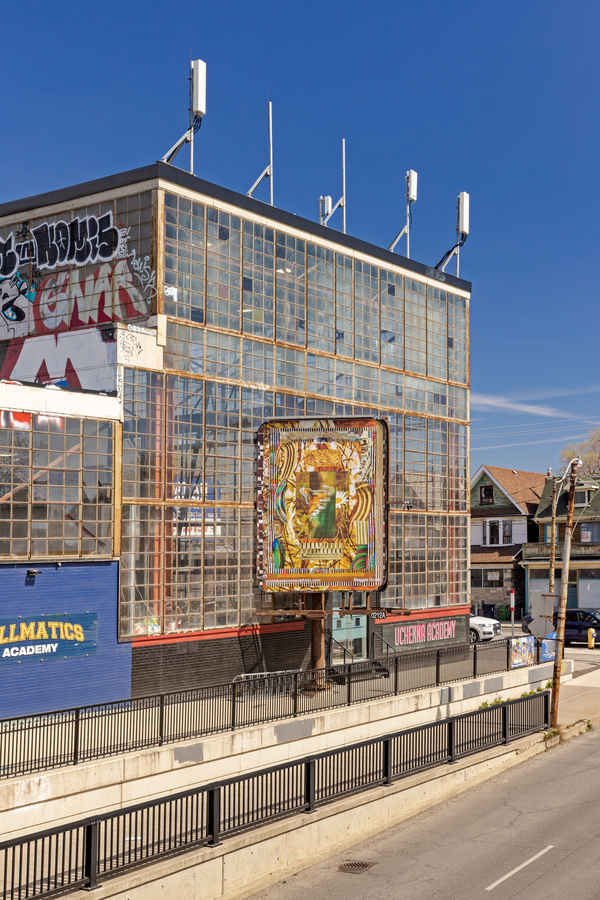
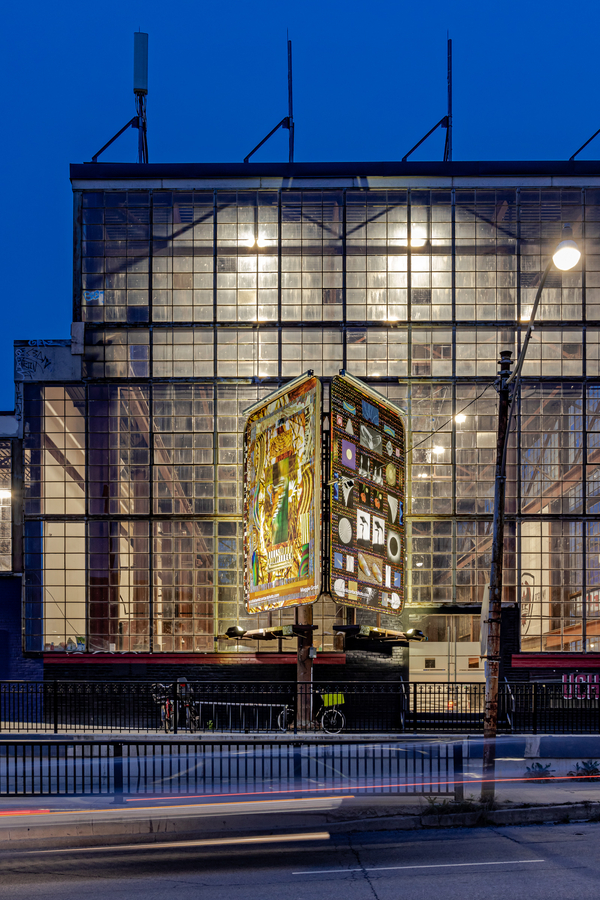
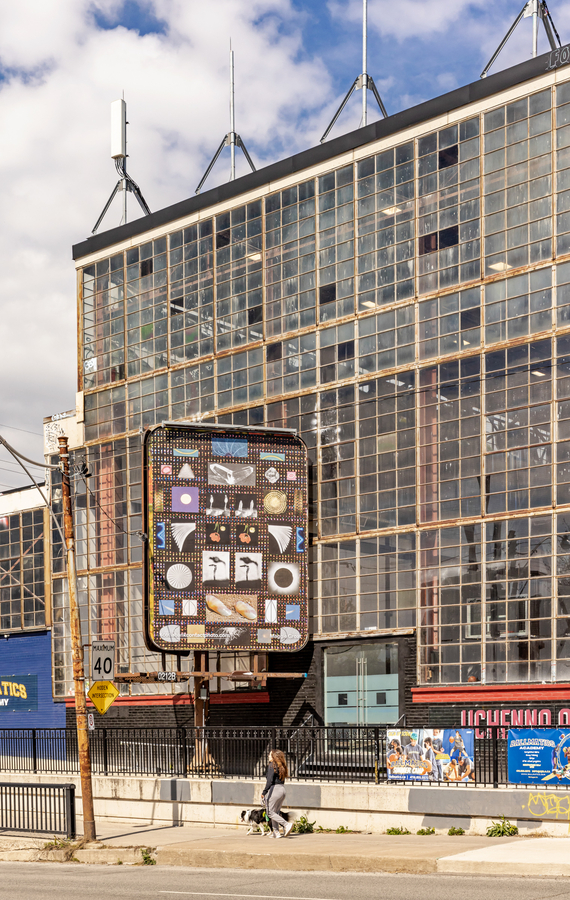
Amid the constellation delineated by this imaginative time travel between prehistoric and contemporary coastlines, the exhibition DOUBLE PENDULUM at CONTACT Gallery acts as a meditative resting point somewhere in the middle. In the gallery, Groat uses salvaged materials to construct an installation that brings together collections of new works on paper, custom-printed textiles, and assemblages of repurposed materials that take on unfixed new formations. The gatherings populating the exhibition connect back to the artist’s interest in gardens and the surprise encounters, acts of exchange, and surreality that can occur in these spaces of intentional rewilding, care, and cultivation, and in how their associations and limitations around notions of power, control, and ownership can be subverted.
Groat’s array of brightly coloured, floral-printed, handmade garments, made from fabric printed with reproductions of the work flowers also gardens, gardens also seeds (2020), is playfully propped against the gallery’s south wall with various ad hoc implements. This collection might comprise a custom-tailored uniform for working, for a ritual use, camouflage, or might represent a deconstructed scarecrow—a range of speculative uses that speak to labour, the scale of the body, identity, survival strategies, or narratives of the future imaginary. These pieces mirror and elaborate upon Groat’s other works, which share the processes of gathering, selecting, pattern drafting and cutting, and the recombination of fragments to make a whole—the garments are, in effect, a collage of a collage. Elsewhere in the gallery, another custom-printed textile panel showing a psychedelic black-and-white repeating pattern and titled Gateway (2023) forms an unexpected doubled entrance into the gallery, inviting the viewer into a transitional and transformational space of subtle encounters.
The selection of small-scale, hand-made collages throughout the exhibition brings into focus the laborious process of gathering, sorting, and recombining images often sourced from pre-internet-era books and magazines, in itself creating an alternative and fragmented archive of a particular era of mass commercial photographic reproduction. The collages displayed in the gallery that were scanned and reproduced for the outdoor installations show the original works’ dimensionality, in comparison to the flatness and large scale of their reproductions. Considering the exhibition space as an extension of the studio, Groat’s multifaceted practice strategically utilises sustainable reproduction methods while adopting photography as one aspect of a larger creative whole. Further, she aims to reduce the harmful impacts of her exhibitions through highly considered choices relating to material production and reuse, lighting, labour, and more. Through the slow process of gathering and combining, and in thinking through the manifold real-world effects of her practice, she considers the possibilities of documenting the unseeable—small moments of exchange and co-existence over time.
Curated by Tara Smith
Presented by CONTACT. Supported by Cindy and Shon Barnett. Funded in part by the Ontario Arts Council and the Canada Council for the Arts
Maggie Groat is a visual artist who makes images and objects from found and salvaged materials. Groat’s recent projects, including STSTS (Western Front, Vancouver), Deep time, portals, particles & pulls (Armory Street, Toronto), flowers also gardens, gardens also seeds (AKA, Saskatoon) and The Future is Dark…I think (La Datcha, Project Space Festival, Berlin), engage with outdoor space through considering researched based, deep time approaches to working site-specifically. Her work has been included in several group exhibitions including LIVING ENTITIES as part of the Momenta Biennale de l’image, Illusion of Process at the Art Gallery of York University and the travelling exhibition Soundings: An Exhibition in Five Parts. In 2015 and 2018 her work was recognized on the Sobey Award long-list and in 2018 her exhibition suns also seasons at Kitchener Waterloo Art Gallery received the OAAG award for Exhibition of the Year. She is the editor of two artists’ anthologies, The Lake (Art Metropole, 2014) and ALMANAC (KWAG, 2017) and has taught at Emily Carr University, Algoma University, and the University of Toronto. She lives and works in the Niagara region of Ontario, the traditional territory of the Haudenosaunee, Chonnonton, and Anishinaabeg.